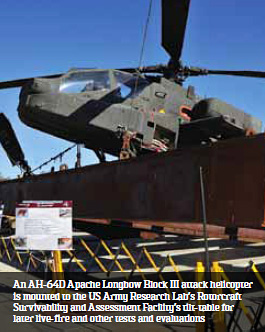INDIAN ARMED FORCES CHIEFS ON OUR RELENTLESS AND FOCUSED PUBLISHING EFFORTS

The insightful articles, inspiring narrations and analytical perspectives presented by the Editorial Team, establish an alluring connect with the reader. My compliments and best wishes to SP Guide Publications.

"Over the past 60 years, the growth of SP Guide Publications has mirrored the rising stature of Indian Navy. Its well-researched and informative magazines on Defence and Aerospace sector have served to shape an educated opinion of our military personnel, policy makers and the public alike. I wish SP's Publication team continued success, fair winds and following seas in all future endeavour!"

Since, its inception in 1964, SP Guide Publications has consistently demonstrated commitment to high-quality journalism in the aerospace and defence sectors, earning a well-deserved reputation as Asia's largest media house in this domain. I wish SP Guide Publications continued success in its pursuit of excellence.
- Indian Air Force Aims for Full Indigenous Inventory by 2047 — Air Chief Marshal A.P. Singh
- General Upendra Dwivedi takes over as the Chief of the Army Staff
- Rajnath Singh assumes charge as Defence Minister for the second consecutive term
- Admiral Dinesh K. Tripathi assumes Command of the Indian Navy as 26th Chief of the Naval Staff
- Prime Minister witnesses 'Bharat Shakti' – a Tri-Services Firing and Manoeuvre Exercise in Pokhran, Rajasthan
US Army Research Lab improves Apache performance

The US Army Research Laboratory (ARL) helped figure out 20 years ago a revolutionary way to increase transmission power in the Apache helicopter without increasing the transmission’s size or weight. Split-torque face gear technology is now inside the Improved Drive System of the new Apache Block III helicopter that began delivery in October 2011.
With split-torque face gear technology, helicopters can now have more power without becoming heavier or bigger, said Lt Colonel David “Blake” Stringer, Ph.D., who is the Chief, Vehicle Technology Directorate Field Element Office in Cleveland. With increased power density, the helicopter’s drive system now has advanced from a horsepower of 2,828 to 3,400, with growth potential, and the helicopter can fly longer, at higher altitudes carrying almost 200 pounds more weapons with a fuel tank—thanks to, essentially, basic scientific research begun by ARL decades ago.
The current Army objective is to field 690 AH-64D Apache Block III helicopters over the next 15 to 20 years. The initial production phase calls for 74 transmissions plus initial spares.
“Face gear technology is really unique because it allows you to send a lot more power through the same geometric footprint than you could normally do with any kind of conventional or other gear configuration,” he said. “The biggest benefit when we started the programme was weight reduction. The initial projections from the project were 40 per cent weight reduction compared to the current baseline Apache transmission.”
Face gears are a specific type of intersecting-shaft gears that have been traditionally used in positioning mechanisms such as clocks, but the army found an application to use them in high power transfer applications. Think of gears as a circular disc, Stringer suggested. “The disc consists of the outer circular edge and two ‘faces.’ In spur or helical gears, the teeth are on the outer edge of the gear disc. In bevel gears, the teeth are set at some angle between the outer edge and the face. With face gears, the teeth are cut on the ‘face’ of the gear disc, or perpendicular to the edge of the disc.”
The tests that the Block III and the PM have had with the face gears has been incredibly successful, a lot more successful I think than they had anticipated and so we’ll just keep going and see how it evolves and if it’s as successful on Block III as it continues through the acquisition process, it will probably proliferate through most of the helicopter fleet eventually.
Transmission failure is the second most dangerous in-flight emergency after fires, Stringer said, which is part of the reason that the US Army began an effort in 1988 to improve drive system technology. They focused most of their efforts on reducing aircraft weight and noise. He said the Army also undertook a project to find a way to keep the airframe itself in service much longer, and to develop technology for a future attack helicopter.
Other important contributors included Boeing, Northstar, the Army’s Aviation Applied Technology Directorate, the University of Illinois, NASA, and DARPA.





